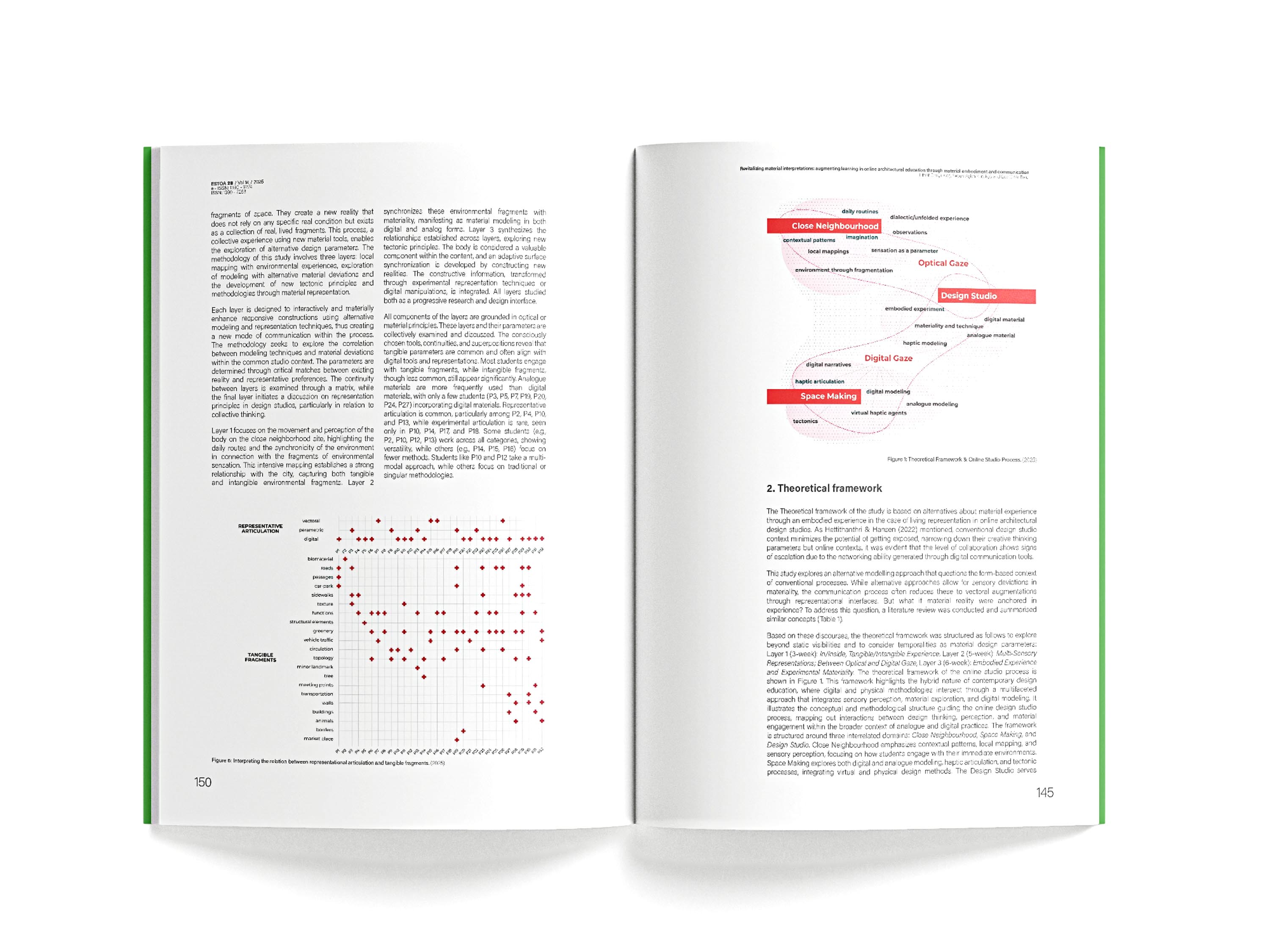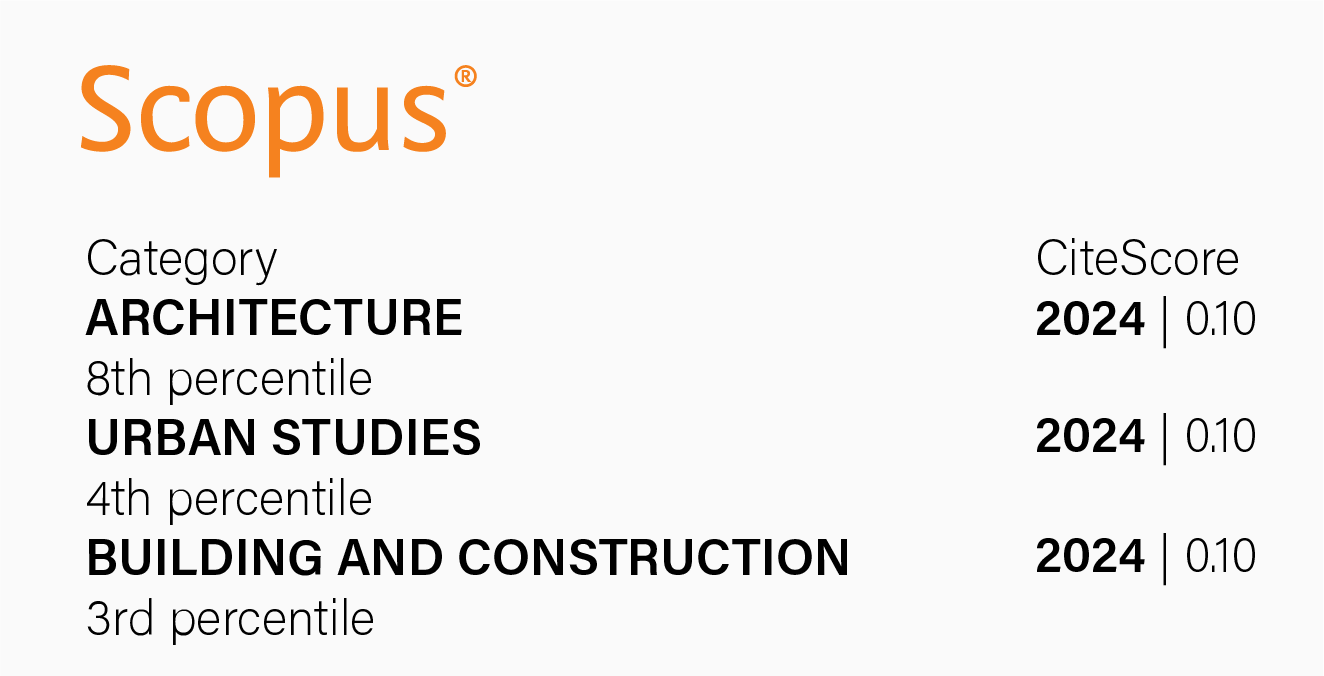Revitalizing material interpretations: augmenting learning in online architectural education through material embodiment and communication
DOI:
https://doi.org/10.18537/est.v014.n028.a10Keywords:
material embodiment, augmetation, design education, architectural modeling, revitalizing communicationAbstract
Material augmentation and communication techniques in online education enhance architectural thinking and creation, opening new avenues for design exploration. By focusing on responsive constructions and unconventional modeling techniques, this study fosters a more immersive and expressive design approach. The methodology unfolds in three phases: local mapping based on environmental experiences, exploration of alternative material deviations, and the development of new tectonic principles through material representation. These phases critically examine the interaction between modeling techniques and material variations, aligning reality with representative preferences. The primary aim is to challenge conventional architectural modeling through dynamic processes and material perception strategies. Ultimately, the study offers alternative processes centered on materials and communication tools, enriching the educational experience by promoting deeper sensory and intellectual connections with the built environment for future architects.
Downloads
References
Al Maani, D. & Roberts, A. (2023). An Attempt to Understand the Design Studio as a Distinctive Pedagogical Setting. The International Journal of Design Education. 17. 31-44. 10.18848/2325-128X/CGP/v17i02/31-44.
Aureli, P. V., & Mastrigli, G. (2006). Beyond the diagram: Iconography, discipline, architecture. In S. Cassara & P. Eisenman (Eds.), Feints (pp. 111-123). Skira Editore S.p.A.
Cimşit Koş, F., & Arıdağ L. (2017). Mimari tasarımda eko-topolojik yaklaşımlar [Eco-topological approaches in architectural design]. Yapı, 422, 128-133.
Cimşit Koş, F., & Gasseloğlu, M. A. (2020). Responsive tectonics: Adaptive narratives in design studios, methodologies for design and production practices in interior architecture. IGI Global.
Deleuze, G. (1988). Foucault. University of Minnesota Press.
Deleuze, G., & Guattari, F. (1987). A thousand plateaus. University of Minnesota Press.
Freire, P. (1970). Pedagogy of the oppressed. Seabury Press.
Grillner, K. (2012). A performative mode of writing place: Out and about the Rosenlund Park, Stockholm, 2008–2010. In S. W. Harding & L. P. Klesse (Eds.), Emergent writing methodologies in feminist studies (pp.149-163). Routledge.
Hettithanthri, U., & Hansen, P. (2022). Design studio practice in the context of architectural education: a narrative literature review. International Journal of Technology and Design Education. 32. 10.1007/s10798-021-09694-2.
Lewitt, A. (2020). The inner studio: A designer’s guide to the resource of the psyche. Riverside Architectural Press.
Lozano-Hemmer, R. (2019). Material quality of thought. In B. Massumi (Ed.), Architectures of the unforeseen: Essays in the occurrent arts (pp. [specific pages]). University of Minnesota Press. http://www.jstor.org/stable/10.5749/j.ctvpwhdm8
Lynn, G. (1999). Animate form. Princeton Architectural Press.
McCann, R. (2005). On the hither side of depth: A pedagogy of engagement. Environmental & Architectural Phenomenology, 16, 8-19.
Merleau-Ponty, M. (2002). Phenomenology of perception. Routledge.
Pallasmaa, J. (2017). Embodied and existential wisdom in architecture: The thinking hand. Body & Society, 23(1), 96-111.
Thomsen, M. R. (2019). How digital crafting is revolutionising traditional materials. Royal Institute of British Architects. https://www.architecture.com/knowledge-and-resources/knowledgelanding-page/how-digital-crafting-is-revolutionising-traditional-materials
Tschumi, B. (1994). Event-Cities (Praxis), The MIT Press
Vidler, A. (2011). Architectural theories: Diagrams of utopia. The Funambulist. https://thefunambulist.net/editorials/architectural-theoriesdiagrams-of-utopia-by-anthony-vidler
Volk, J. C., & Marcus, M. A. (2009). Haptic diagrams: From cinematography to architectural performance. Journal of Architectural Education, 63(1), 7176.

Published
How to Cite
Issue
Section
License
Copyright (c) 2025 Estoa. Journal of the Faculty of Architecture and Urbanism

This work is licensed under a Creative Commons Attribution-NonCommercial-ShareAlike 4.0 International License.
The Journal declines any responsibility for possible conflicts derived from the authorship of the works that are published in it.
The University of Cuenca in Ecuador conserves the patrimonial rights (copyright) of the published works and will favor the reuse of the same ones, these can be: copy, use, diffuse, transmit and expose publicly.
Unless otherwise indicated, all contents of the electronic edition are distributed under a Creative Commons Attribution-NonCommercial-ShareAlike 4.0 International License.



